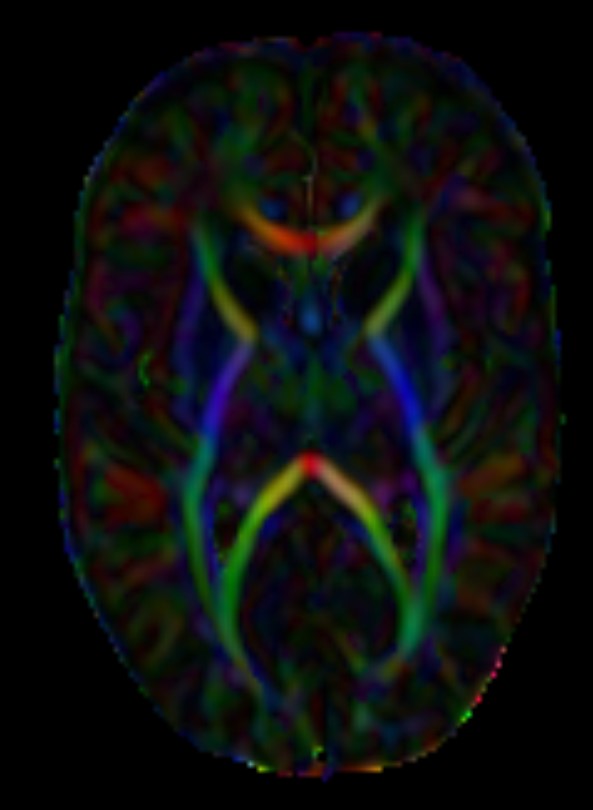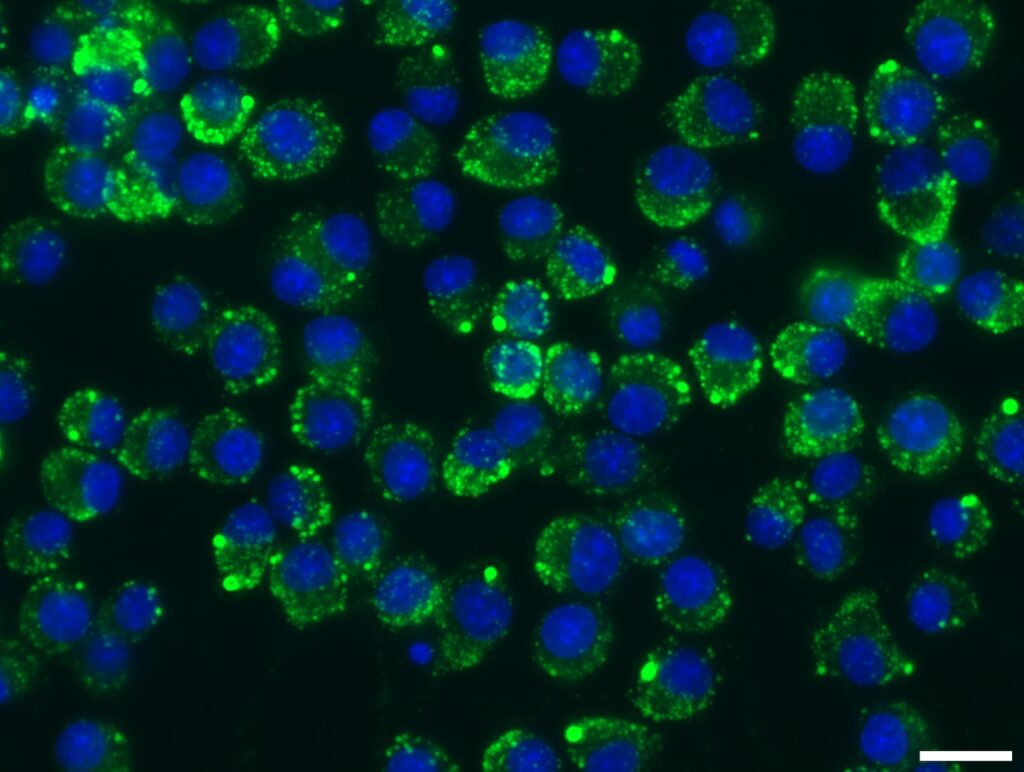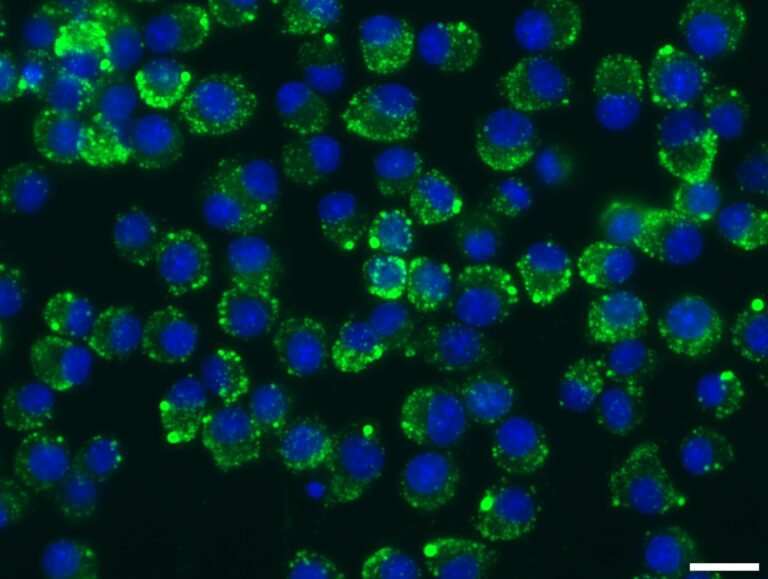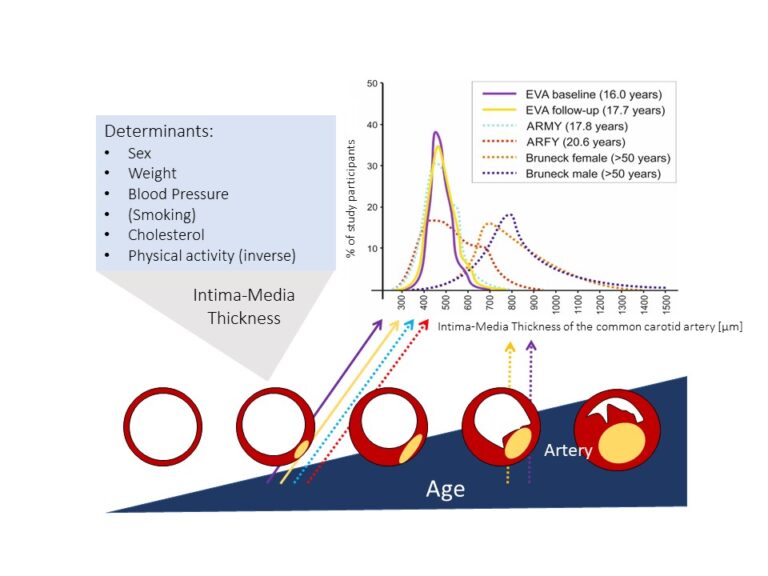
Anichstraße 35
A-6020 Innsbruck
Fax: +43 512 504 27308
Email: Ursula.Kohlendorfer@i-med.ac.at
Website: https://kinderzentrum.tirol-kliniken.at/
Research year
Research Branch (ÖSTAT Classification)
302049, 301401, 302060
Keywords
bioprinting, brain injury, brain maturation, cardiovascular risk, developmental outcome, FOXO3 modulating drugs, neonatal neuroimaging, neonatal neuroscience, organ-on-chip, and Preterm infants
Research Focus
Characterisation of risk predictors for adverse outcomes in preterm infants
Monitoring of preterm brain maturation and diagnosis of brain injury (aEEG, GM, MRI, NIRS)
Investigation of the effects of prematurity, neonatal growth and feeding practices on cardiovascular risk factors
Development of substances for neuroprotection and the treatment of new-born brain injury
Analyses of FOXO3 modulating drugs
Development of 3D-printed tissue equivalents
General Facts
The Department of Neonatology at the Medical University of Innsbruck is a perinatal centre with the highest level of care. It offers treatment for all preterm and critically ill neonates in Tyrol and a standardised follow-up programme until these children reach school age. The researchers aim at realising the early identification of infants at risk of adverse outcome and the improvement of long-term outcomes. To achieve these, we combine basic (www.neonatal-research.at) and clinical science. Clinical research includes the characterisation of neurodevelopmental and cardiovascular outcomes of very preterm infants until school age and the definition of risk predictors of adverse outcomes. This encompasses multimodal methods to monitor brain activity (aEEG, NIRS), brain maturation (GM) and brain injury (MRI), evaluation of the role of nutrition/growth and research into the optimisation of perinatal resuscitation (e.g. stabilisation of the preterm infant prior to umbilical cord clamping). By combining basic and clinical research, we evaluate laboratory biomarkers to diagnose brain injury and to predict long-term outcomes. In addition, we participate in a worldwide collaboration for quality improvement – the Vermont Oxford Network – with the aim of following key neonatal outcomes and thereby continuously improving patient care. Close national and international collaborations exist with perinatal centres as well as local neuroscience and cardiovascular science groups.
Research
Neonatal Neuroscience – Clinical and Experimental Research Groups
Griesmaier E., Neubauer V., Posod A., Hammerl M., Urbanek M., Huber E., Höck M., Winkler I., Pellkofer Y., Sappler M., Pupp Peglow U., Schreiner C., Kiechl-Kohlendorfer U.
Improvements in neonatal intensive care medicine in recent decades have substantially reduced preterm infant mortality. However, infants born prematurely remain at high risk of neurodevelopmental delay and lifelong handicap. To date, no causal therapeutic strategies are available for neonatal brain injury. Clinical management therefore focuses on optimal perinatal care and on early identification of infants at high risk of adverse outcomes.
Clinical Research Projects
Evaluation of Preterm Brain Development and Outcome Prediction
For the preterm infant, the provision of diagnostic measurements of brain compromise is a high priority in order to minimise the risk of developmental impairment. The possibility to monitor electro-cortical activity during the first days and weeks of life has dramatically improved our abilities to assess neonates at high risk of impairment. Amplitude-integrated electroencephalography (aEEG) is a reliable and valuable tool to assess electro-cortical activity and provides continuous evaluation of neonatal brain function at the bedside. In term neonates suffering from perinatal asphyxia, aEEG in the first days of life correlates strongly with the degree of brain injury and neurological outcome. aEEG in preterm infants also shows a predictive value for short and long-term outcome. Despite extensive research, several facts remain unclear, which might improve the care of the new-born infant and the subsequent outcome in long-term. We investigate the optimal time for assessing aEEG to predict brain injury and long-term outcome in preterm infants. Furthermore, we investigate effects of routinely used medication, such as prophylactic low-dose paracetamol to induce ductal closure in preterm infants, on functional brain development. Conventional and diffusion tensor weighted cerebral magnetic resonance imaging (MRI) performed at term-equivalent age provides detailed information on alterations in postnatal brain development after preterm birth.

Furthermore, the effect of treatment strategies, e.g. early, low-dose paracetamol administration to endorse closure of the ductus arteriosus, or the influence of postnatal conditions, such as a postnatal cytomegalovirus infection, may be evaluated.
Neurodevelopmental Follow-Up of Very Preterm Infants
Children born preterm are at risk of neurodevelopmental delay or disorders. Regular follow-up visits are therefore important not only to provide support for these children and their parents, but also for research purposes and quality control of neonatal intensive care.
Experimental Research Projects
Biomarkers of Neonatal Brain Injury
The early detection of brain injury and identification of infants at risk for long-term neurodevelopmental impairment are essential for the timely administration of neuroprotective agents. At present, the diagnosis of neonatal brain injury is based on clinical examination, electrophysiological tests and brain imaging. Blood-based biomarkers are promising tools, which may help physicians tailor therapeutic strategies and predict outcomes more accurately. We currently investigate the diagnostic and prognostic potential of various biomarkers including the neuropeptide secretoneurin as well as short, non-coding ribonucleic acids (so-called microRNAs).
Neuroprotective Agents
Long-term morbidity of neonatal brain injury is substantial and survivors continue to have high rates of neurodevelopmental impairment. Current treatment options are usually based on best supportive care, as causal therapies are not available to date. Our research laboratory assesses potential neuroprotective agents in several in vivo and in vitro models of full-term and preterm brain injury.

Current Health Challenges
COVID-19 Pandemic
Hochmayr C., Winkler I., Hammerl M., Huber E., Urbanek M., Griesmaier E., Kiechl-Kohlendorfer U., Posod A.
One of our main research interests are current health challenges. In face of the COVID-19 pandemic, we have implemented a clinical trial to investigate the effects of a maternal SARS-CoV-2 infection during pregnancy, peri- or post-partum on the new-born child. We are particularly interested in naturally acquired passive immunity with a focus on breast milk and long-term health effects of in utero SARS-CoV-2 exposure.
Cardiovascular Science
Cardiovascular Follow-Up of Very Preterm Infants (NeoVasC)
Mitterer W., Hochmayr C., Posod A., Neubauer V., Griesmaier E., Kiechl-Kohlendorfer U.
Prematurity is an established risk factor for cardiovascular disease in adult life. Early detection of cardiovascular risk predictors is therefore crucial to the implementation of effective prevention programmes. Our research group assesses both traditional and novel cardiovascular risk factors from birth until preschool age. One special focus is on the protective effect of exclusive human milk feeding on cardiovascular risk.
Early Vascular Ageing in YOUth (EVA4YOU)
Hochmayr C., Gande N., Staudt A., Messner A., Nairz J., Kiechl-Kohlendorfer U.
EVA4YOU is a study that builds on the existing knowledge gained from the EVA study. It aims to improve vascular health of 15/16-year-old Tyrolean pupils and apprentices and to elucidate mechanisms of early vascular ageing.

Our research focus includes the impact of prematurity, neonatal growth characteristics and feeding practices on early vascular ageing. Associations with additional risk markers for cardiovascular diseases will be elucidated.
Further Experimental Research Groups
Identification of drugs that modulate the transcription factor FOXO3
Obexer P.
FOXO transcription factors regulate a plethora of cellular processes such as metabolism, invasion, chemotherapy resistance and longevity. The research focus is dedicated to investigating the impact of FOXO3-specific small molecular compounds identified by a medium-throughput fluorescence polarisation assay screening in a drug-repositioning strategy on cancer stem cells.
3D Bioprinting and Metabolism
Hagenbuchner J.
The main aim of the 3D bioprinting group is to model human tissue via 3D bioprinting (organ-on-chip) as alternatives for animal testing. We are currently focusing in a multidisciplinary team (FG-15 T. Adolph, J. Hagenbuchner, M. Keller, L. Neumann, and K. Watschinger) on the pathological effects of damage to membrane lipids (defects in the β-oxidation of long-chain fatty acids or in connection with inflammatory bowel disease). Therefore, we establish/refine a fully 3D bio-printed and vascularized model of healthy and β-oxidation defective fibroblasts to study the localisation of mitochondrial oxidative damage, to develop a model that better mimics the in vivo situation and to investigate mitochondrial interconnectivity and exchange between cells. We expect a significantly better understanding of VLCADD/LCHADD, novel clues for targeted therapies and precision medicine applications. Our group focuses on the role of mitochondrial structures, metabolism and cell death regulation in childhood malignancies. In 2018, Hagenbuchner J. and Ausserlechner M.J. founded the first Austrian 3D-bioprinting laboratory and are currently focusing on 3D-printed tissue equivalents, especially vascularised skin chips and 3D-bioprinted organ-on-chip models to study metabolism in humanised in vitro models.
Pictures
Selected Publications
- Schreiner, Christina; Hammerl, Marlene; Neubauer, Vera; Kiechl-Kohlendorfer, Ursula; Griesmaier, Elke. Amplitude-integrated electroencephalography signals in preterm infants with cerebral hemorrhage. EARLY HUMAN DEVEELOPMENT. 2021; 154; 105309.
- Mitterer, Wolfgang; Binder, Christoph; Blassnig-Ezeh, Anya; Auer-Hackenberg, Lorenz; Berger, Angelika; Simma, Burkhard; Wald, Martin; Lee, Martin; Kiechl-Kohlendorfer, Ursula. Effects of an exclusive human-milk diet in preterm neonates on early vascular aging risk factors (NEOVASC): study protocol for a multicentric, prospective, randomised, controlled, open, and parallel group clinical trial. TRIALS. 2021; 22(1); 509.
- Pechlaner, Raimund; Posod, Anna; Yin, Xiaoke; Burnap, Sean Antony; Kiechl, Sophia Julia; Mayr, Manuel; Kiechl, Stefan; Kiechl-Kohlendorfer, Ursula. Very preterm birth results in later lower platelet activation markers. PEDIATRIC RESEARCH 2021; 89(5); 1278-1282.
- Goeral, Katharina; Schwarz, Hannah; Hammerl, Marlene; Brugger, Jonas; Wagner, Michael; Klebermass-Schrehof, Katrin; Kasprian, Gregor; Kiechl-Kohlendorfer, Ursula; Berger, Angelika; Olischar, Monika. Longitudinal Reference Values for Cerebral Ventricular Size in Preterm Infants Born at 23-27 Weeks of Gestation. JOURNAL OF PEDIATRICS. 2021; 238; 110-117.
- Hochmayr, Christoph; Ndayisaba, Jean-Pierre; Gande, Nina; Staudt, Anna; Bernar, Benoit; Stock, Katharina; Geiger, Ralf; Knoflach, Michael; Kiechl-Kohlendorfer, Ursula; Early Vascular Ageing (EVA) Study Group. Prevalence and differences of ideal cardiovascular health in urban and rural adolescents in the Region of Tyrol: results from the EVA Tyrol study. BMC CARDIOVASCULAR DISORDERS. 2021; 21(1); 338.
- Gande, Nina; Pechlaner, Raimund; Bernar, Benoit; Staudt, Anna; Stock, Katharina; Hochmayr, Christoph; Geiger, Ralf; Kiechl-Kohlendorfer, Ursula; Knoflach, Michael; Early Vascular Aging (EVA) Study Group. Cardiovascular health behaviors and associations of sex, age, and education in adolescents – Results from the EVA Tyrol study. NUTRITION METABOLISM AND CARDIOVASCULAR DISEASES. 2021; 31(4); 1286-1292.
- Kiechl, Sophia Julia; Staudt, Anna; Stock, Katharina; Gande, Nina; Bernar, Benoit; Hochmayr, Christoph; Winder, Bernhard; Geiger, Ralf; Griesmacher, Andrea; Anliker, Markus; Kiechl, Stefan; Kiechl-Kohlendorfer, Ursula; Knoflach, Michael; Pechlaner, Raimund; Early Vascular Ageing (EVA) Study Group. Predictors of Carotid Intima-Media Thickness Progression in Adolescents-The EVA-Tyrol Study. JOURNAL OF THE AMERICAN HEART ASSOCIATION. 2021; 10(18); e020233.
- Schoepf, Anna M; Salcher, Stefan; Obexer, Petra; Gust, Ronald. Tackling resistance in chronic myeloid leukemia: Novel cell death modulators with improved efficacy. EUROPEAN JOURNAL OF MEDICAL CHEMISTRY. 2021; 216(S); 113285.
- NCD Risk Factor Collaboration (NCD-RisC). Worldwide trends in hypertension prevalence and progress in treatment and control from 1990 to 2019: a pooled analysis of 1201 population-representative studies with 104 million participants. LANCET. 2021; 398(10304); 957-980.
- Sappler, Maria; Hammerl, Marlene; Pellkofer, Yasmin; Griesmaier, Elke; Höck, Michaela; Janjic, Tanja; Gizewski, Elke Ruth; Kiechl-Kohlendorfer, Ursula; Neubauer, Vera. Prophylactic Low-Dose Paracetamol Administration for Ductal Closure and Microstructural Brain Development in Preterm Infants. NEONATOLOGY. 2022; 119(3); 361-369.
- Schreiner, Christina; Sappler, Maria; Höck, Michaela; Hammerl, Marlene; Neubauer, Vera; Kiechl-Kohlendorfer, Ursula; Griesmaier, Elke. Prophylactic Low-Dose Paracetamol Administration for Ductal Closure and Amplitude-Integrated Electroencephalography in Preterm Infants. FRONTIERS IN PEDIATRICS. 2022; 10(S); 887614.
- Winkler, Ira; Heisinger, Tatjana; Hammerl, Marlene; Huber, Eva; Urbanek, Martina; Kiechl-Kohlendorfer, Ursula; Griesmaier, Elke; Posod, Anna. MicroRNA Expression Profiles as Diagnostic and Prognostic Biomarkers of Perinatal Asphyxia and Hypoxic-Ischaemic Encephalopathy. NEONATOLOGY. 2022; 119(2); 204-213.
- Nothdurfter, Daniel; Ploner, Chistian; Coraça-Huber, Debora;, Wilflingseder, Doris; Müller, Thomas; Hermann, Martin; Hagenbuchner, Judith*; Ausserlechner, Michael J.*; *correspondence: 3D bioprinted, vascularised neuroblastoma tumor environment in fluidic chip devices for precision medicine drug testing. BIOFABRICATION. 2022; 14(3); 035002.
- Kiechl, Sophia Julia; Staudt, Anna; Stock, Katharina; Gande, Nina; Bernar, Benoit; Hochmayr, Christoph; Winder, Bernhard; Geiger, Ralf; Griesmacher, Andrea; Egger, Alexander E; Pechlaner, Raimund; Kiechl, Stefan; Knoflach, Michael; Kiechl-Kohlendorfer, Ursula. Diagnostic Yield of a Systematic Vascular Health Screening Approach in Adolescents at Schools. JOURNAL OF ADOLESCENT HEALTH. 2022; 70(1); 70-76.
- Pichler, Gerhard; Goeral, Katharina; Hammerl, Marlene; Perme, Tina; Dempsey, Eugene M; Springer, Laila; Lista, Gianluca; Szczapa, Tomasz; Fuchs, Hans; Karpinski, Lukasz; Bua, Jenny; Avian, Alexander; Law, Brenda; Urlesberger, Berndt; Buchmayer, Julia; Kiechl-Kohlendorfer, Ursula; Kornhauser-Cerar, Lilijana; Schwarz, Christoph E; Gründler, Kerstin; Stucchi, Ilaria; Schwaberger, Bernhard; Klebermass-Schrehof, Katrin; Schmölzer, Georg M; COSGOD III study group. Cerebral regional tissue Oxygen Saturation to Guide Oxygen Delivery in preterm neonates during immediate transition after birth (COSGOD III): multicentre randomised phase 3 clinical trial. BRITISH MEDICAL JOURNAL. 2023; 380; e072313.
Selection of Funding
- Early vascular ageing (NeoVasC and EVA4YOU), part of the excellence initiative (Competence Centers for Excellent Technologies—COMET) of the Austrian Research Promotion Agency FFG: “Research Center of Excellence in Vascular Ageing—Tyrol, VASCage” (K project number 843536) of the Austrian Research Promotion Agency FFG (COMET program), funded by the Austrian Ministry for Transport, Innovation and Technology, the Austrian Ministry for Digital and Economic Affairs and the federal states Tyrol (via Standortagentur), Salzburg and Vienna (via Vienna Business Agency). 1,1 Mio. Euro
- FFG Bridge 1 Project (Co-Primary Investigator Judith Hagenbuchner), starting 01.01.2020, 210,000 Euro
- FG15 (FWF funded Forschungsgruppe: 1,496.600 Euro); FG15 Oxidative damage & repair of membrane lipids in health and disease; Subproject: 3D-bioprinted tissue to study β-oxidation defects, (Primary Investigator Judith Hagenbuchner), 2021, 295,298 Euro
- BMBWF “Ersatzmethoden Tierversuche” 3D-bioprinted tumor-on-chip model for studying tumor angiogenesis and metastasis in vitro (Primary Investigator Judith Hagenbuchner), 2021, 179,500 Euro
Collaborations
- NCD Risk Factor Collaboration – Imperial College London
- Gerhard Pichler, Division of Neonatology, Department of Pediatrics and Adolescent Medicine, Medical University of Graz, Graz, Austria.
- Martin Lee, Prolacta Bioscience, Monrovia, CA
- Bea Latal, Child Development Centre, University Children’s Hospital Zurich, Switzerland
- Sven Wellemann, Department of Neonatology, University Children’s Hospital Regensburg, Germany
- Sampsa Vanhatalo, Department of Neurosciences, University of Helsinki, Finland
- Sara Tucci, University Medical Centre Freiburg, Germany
- Jan Kureck, TU Berlin, Germany
- Moon R, Goldberg Center for Community Pediatric Health, Children’s National Medical Center, Washington, US, and Blair PS, University of Bristol, UK (International Society for the Prevention of Infant Death)
- Tollinger M, Institute of Organic Chemistry, CMBI- Centre for Molecular Biosciences Innsbruck, University of Innsbruck, Innsbruck, Austria

